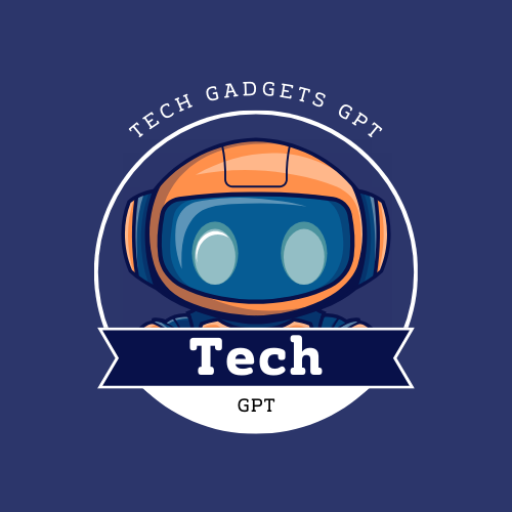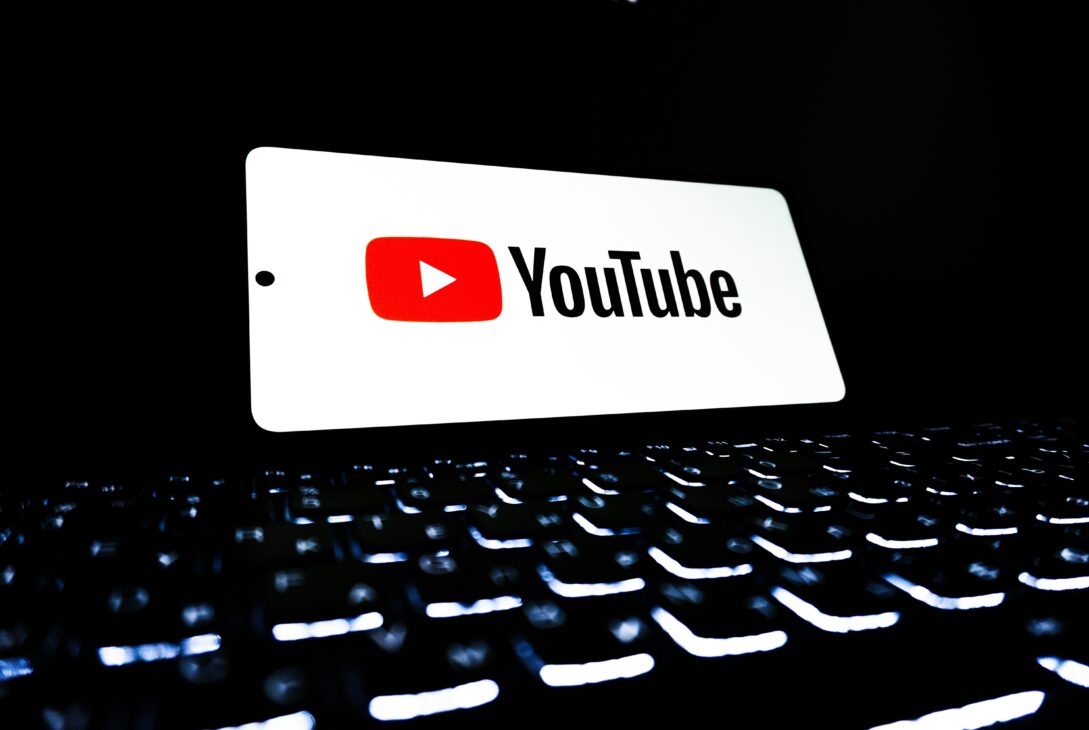Table of Contents
In 2025, content creation on YouTube is more competitive than ever. Creators are expected to ideate, script, film, edit, optimize, and promote content at a rapid pace to stay relevant. Managing a YouTube channel is no longer a part-time effort—it’s a business. And just like any business, it requires systems to scale efficiently.
That’s where YouTube automation comes in.
Whether you’re a solo creator or managing multiple channels, automation helps reduce manual effort by streamlining repetitive tasks using AI tools and services. From video editing to thumbnail creation, scheduling uploads, and even writing scripts, YouTube automation lets you grow smarter, not harder.
In this in-depth guide, you’ll learn:
- What YouTube automation really is
- The best tools (free and paid) to use
- A step-by-step workflow to automate your content
- Real examples of channels using automation
- Best practices to avoid YouTube penalties
Let’s explore how automation can transform your channel into a scalable content machine.
What Is YouTube Automation?
YouTube automation refers to the use of tools, AI software, or outsourced services to manage content creation, optimization, and publishing tasks on YouTube with minimal manual intervention.
Instead of manually doing everything—from brainstorming topics and writing scripts to uploading and optimizing each video—you can automate various stages of your workflow using powerful automation platforms.
🔁 Tasks You Can Automate:
- Scriptwriting (e.g., Jasper, ChatGPT)
- Video editing and rendering (e.g., InVideo, Pictory)
- Voiceovers (e.g., Synthesia, Maestra)
- Thumbnail creation (e.g., Canva, Placeit)
- SEO and metadata optimization (e.g., TubeBuddy, VidIQ)
- Upload scheduling (e.g., Hootsuite, YouTube Studio)
- Social media promotion (e.g., Buffer)
- Performance tracking and analytics
This method is beneficial for faceless YouTube channels and content creators aiming to publish high volumes of content with minimal daily effort.
✅ Key Benefits of YouTube Automation (Expanded)
1. Save Time for Creativity and Strategy
One of the most compelling reasons to adopt YouTube automation is the amount of time it frees up. Instead of manually writing scripts, editing videos, or scheduling uploads, creators can use AI and automation tools to handle these repetitive tasks.
This allows you to focus your energy on big-picture strategy, storytelling, or content ideation. Whether you’re running a faceless channel or building a personal brand, automation can cut hours from your weekly workload, giving you space to stay creative and inspired.
2. Boost Productivity Without Burnout
Publishing more frequently is one of the keys to YouTube growth, but doing so manually can be exhausting. With automation, you can schedule batch content creation, streamline editing, and automate upload times—all without increasing your mental load.
This means you can post 2–3 videos a week without hiring a team or sacrificing your work-life balance. Automation enables a consistent production pipeline, which is critical for scaling your channel efficiently.
3. Consistency Improves Algorithm Performance
YouTube rewards consistency. The algorithm favors creators who upload on a regular schedule, which boosts visibility, recommendations, and subscriber engagement. Automation ensures that your content goes live even if you’re on vacation or juggling other commitments.
Tools like Hootsuite or Buffer can auto-publish content across platforms, keeping your YouTube presence active and reliable. When uploads are consistent, so is your audience growth.
4. Cost Efficiency for Solo Creators
Hiring editors, scriptwriters, thumbnail designers, and social media managers can quickly get expensive. Automation tools replace many of these functions—often for free or at a low cost. For example, you can generate scripts using ChatGPT, design thumbnails with Canva, and edit videos using Descript—all without needing to outsource. This cost-efficient model lets you run a lean channel operation while still maintaining professional production quality.
5. Enhanced SEO and Discoverability
Getting your videos seen is half the battle. Tools like TubeBuddy and VidIQ automate SEO tasks such as keyword research, tag suggestions, title optimization, and competitor tracking. These platforms provide real-time insights that help improve your video ranking, click-through rate (CTR), and watch time.
With better metadata and strategic keyword placement, your videos have a higher chance of appearing in search results and recommendations, without you having to crunch the numbers manually.
6. Reduce Burnout and Stay Sustainable
Creator burnout is a serious issue in 2025, especially with rising pressure to stay relevant and consistent. Automation relieves that pressure by streamlining workflows, minimizing decision fatigue, and reducing the amount of daily effort required.
Instead of spending hours editing or posting manually, creators can rely on scheduled automation systems to keep their content flowing. This makes content creation a sustainable, long-term endeavor instead of a race against the clock.
⚠️ Risks of YouTube Automation (Expanded)
1. Over-Automation Can Harm Your Brand
It’s tempting to fully automate every aspect of your channel, especially with today’s advanced AI. But too much automation can make your content feel robotic, impersonal, and detached. Audiences still crave authenticity. If every video sounds like it was written and voiced by a machine, you risk alienating viewers.
It’s important to add personal touches—like custom intros, human narration, or creator insights—to retain the human connection that drives engagement and loyalty.
2. YouTube Policy Violations Can Kill Your Channel
Automated practices like sub-for-sub bots, fake engagement, or AI-generated spammy content may violate YouTube’s community guidelines and monetization policies. YouTube is increasingly using AI to detect such violations, and even unintentional misuse can result in demonetization, strikes, or channel bans.
Always review YouTube’s Terms of Service before deploying automation tools, especially those involving comment bots, mass uploads, or AI voiceovers.
3. Quality Can Suffer Without Oversight
While AI tools have improved dramatically, they’re not perfect. Automated video editors, text-to-speech generators, and thumbnail creators can sometimes produce generic or awkward content.
If you rely too heavily on automation without reviewing and refining the output, you risk publishing low-quality videos that hurt viewer retention. Think of automation as your assistant, not your replacement. Always review the final product before hitting “publish.”
4. Tool Overload and Diminishing ROI
With so many tools on the market, it’s easy to fall into the trap of using (and paying for) multiple overlapping platforms. For example, using both Hootsuite and Buffer for scheduling or both Descript and CapCut for editing may duplicate features and inflate your costs.
To stay lean and effective, audit your tool stack regularly. Prioritize platforms that offer the most value in a single dashboard and stick to free or freemium versions whenever possible.
🔐 Tip: YouTube Automation is a tool, not a replacement for human creativity. Balance efficiency with authenticity.
🔄 How to Automate Your YouTube Channel (Step-by-Step Workflow)
If you’re serious about scaling your YouTube channel with less manual effort, automation is your best ally. Here’s a comprehensive, step-by-step framework to help you set up a sustainable automation system—from idea to upload
1. Define Clear, Measurable Goals
Before diving into tools or workflows, you need absolute clarity on your goals. Automation is most effective when aligned with a clear purpose. Ask yourself:
- Are you trying to grow subscribers rapidly?
Focus on volume-based content and SEO automation tools. - Do you want to generate ad revenue or passive income?
Optimize for watch time, monetization, and evergreen content. - Are you building a faceless YouTube brand?
Use text-to-video tools and AI voiceovers to produce content without showing your face. - Is your goal lead generation or affiliate marketing?
Prioritize call-to-actions, link tracking, and niche targeting.
Once your objectives are locked in, you can tailor your tools, content types, and automation processes to fit those goals.
2. Choose the Right Niche for Automation
Not all content types are equally suited for automation. You’ll want a niche that can be scripted, edited, and scheduled without needing heavy manual involvement. Top automation-friendly niches include:
- Top 10 or Listicle Channels – Quick to produce, evergreen, and perfect for faceless content.
- Tutorials & Explainers – Use stock visuals, screen recordings, or animations.
- Tech/Product Reviews – Great for affiliate revenue; scripts and visuals can be AI-powered.
- Motivational or Quotes Content – Ideal for AI voiceovers and royalty-free visuals.
- DIY or Life Hacks – Batch film or automate with B-roll + TTS narration.
- Self-Improvement & Productivity – Use summarized books or blog content as scripts.
Choose a niche that aligns with your interests, has monetization potential, and allows for systematized production.
3. Plan a Detailed Content Calendar
Automation requires structure. A well-organized content calendar helps you manage every aspect of the workflow in advance. Use tools like Trello, Notion, or Google Sheets to create a calendar that includes:
- Video Topics (based on keyword research or trends)
- Script Deadlines
- Target Video Duration
- Thumbnail Planning
- Upload and Promotion Dates
With this structure, your automation tools will operate with precision—ensuring nothing falls through the cracks.
4. Automate Script Creation Using AI
Scripting is often a bottleneck, but with AI tools, you can produce high-quality scripts in minutes.
- Use ChatGPT or Jasper.ai to generate video scripts from prompts or keywords.
- Structure your script:
- Hook: Grab attention in the first 10 seconds.
- Body: Present key information or story points clearly.
- CTA (Call-to-Action): Ask viewers to like, subscribe, or click a link.
- Turn old blog posts into scripts using Pictory or ContentFries, perfect for repurposing content you already own.
AI scripting saves hours and lets you focus on ideation and creativity.
5. Automate Video Creation (Faceless & Scalable)
Faceless content works well when produced using smart tools that blend audio, visuals, and storytelling. Here are some top options:
- InVideo: Convert scripts into full videos using stock footage, transitions, and music.
- Pictory: Turn blog posts or long-form content into AI-edited videos with voiceovers.
- Synthesia.io: Generate human-like avatars that narrate your content—ideal for educational or explainer videos.
These tools are beginner-friendly, cost-effective, and scalable. You can create several videos per week without traditional filming.
6. Batch Design Thumbnails with Automation
Thumbnails are essential for click-through rate—but don’t spend hours designing each one. Use tools like:
- Canva: Pre-built YouTube thumbnail templates that can be customized with a few clicks.
- Placeit: Dynamic thumbnail mockups ideal for lifestyle and tech niches.
Pro Tip: Batch-produce 10–20 thumbnails at once. Use bold colors, large readable text, and brand elements (like a logo or consistent style) for better brand recall.
7. Optimize SEO and Upload Automatically
Your video’s success depends heavily on optimization. Use these tools to automate metadata and uploading:
- TubeBuddy: Helps with keyword research, tag suggestions, SEO titles, and analytics.
- VidIQ: Adds deeper AI-based keyword scoring, competitor research, and title suggestions.
- YouTube Studio: Schedule uploads in advance for consistency.
- Hootsuite/Buffer: Automatically share your videos across social platforms once they’re live.
Use A/B testing on thumbnails and titles (TubeBuddy’s Legend Plan supports this) to maximize performance post-upload.
8. Promote Content Automatically Across Platforms
Don’t rely solely on YouTube’s algorithm. Extend your reach with multi-channel automation:
- Hootsuite/Buffer: Schedule posts to Instagram, X (Twitter), Facebook, LinkedIn, and Pinterest.
- Zapier: Automatically send YouTube uploads to:
- Email subscribers via ConvertKit or MailerLite.
- Blog embeds on WordPress or Webflow.
- Discord, Slack, or Telegram communities.
You can create full promotional workflows that require zero manual effort after setup.
9. Track Performance and Optimize
YouTube success = constant refinement. Use analytics to inform your automation strategy:
- YouTube Studio: Track click-through rate, impressions, and real-time subscriber data.
- TubeBuddy/VidIQ: Analyze competitor trends, best-performing tags, and viewer engagement.
- Google Analytics: For traffic coming from embedded videos or cross-promotions.
Monitor weekly and adjust:
- Topics based on search demand
- Thumbnails based on CTR
- Script style based on audience retention
This closes the automation loop—your data informs your next batch of content.
Thanks! Here’s a fully rewritten and detailed version of both sections:
✅ Real Examples of Automated YouTube Channels
✅ Best Practices for Safe and Smart Automation
These will be ready for direct integration into your blog, with improved depth, clarity, and SEO alignment.
Top YouTube Automation Tools (Free + Paid)
Here’s a curated list of the best tools available, many with free versions:
| Tool | Category | Free Plan | Description |
| TubeBuddy | SEO Optimization | ✅ | Tags, titles, thumbnail testing |
| InVideo | AI Video Creation | ✅ | Templates, stock media, automation |
| Pictory | Blog-to-Video | ✅ | Convert scripts/blogs to videos |
| Jasper | Script Writing | ⚠️ Trial | AI copywriting for intros & hooks |
| Canva | Thumbnail Design | ✅ | Custom thumbnails and channel art |
| Hootsuite | Content Scheduling | ✅ | Automate posts on all platforms |
| Synthesia.io | AI Avatar Videos | ⚠️ Paid | Realistic voiceovers, faceless style |
| Maestra | Subtitles/Translation | ✅ | 125+ languages, AI dubbing |
🎥 Real Examples of Automated YouTube Channels
To understand how automation works at scale, look no further than these successful YouTube brands. Each of them uses systemized production models to create massive content libraries without burning out.
1. WatchMojo
- Niche: Pop Culture Lists
- Automation Style: Templated scripts, voiceover narration, batch editing
- Output: 3–5 videos per day
WatchMojo is one of the most iconic list-based YouTube channels in the world. Their production pipeline is highly standardized—from script format and narration style to post-production effects. The team relies on batch scriptwriting and voiceovers, enabling rapid turnaround times. While human-led, their processes resemble assembly-line efficiency, powered by automation tools and templates.
2. 5-Minute Crafts
- Niche: DIY, Life Hacks, and Experiments
- Automation Style: Bulk filming, clip repurposing, rapid editing
- Output: Daily uploads across multiple platforms
5-Minute Crafts thrives on visual storytelling that doesn’t require narration, which makes their content ideal for automation. They record hours of footage in one session and slice it into dozens of short-form videos using automated editing workflows. Their repetitive but popular format makes batch creation and repurposing easy across YouTube, Instagram, Facebook, and TikTok.
3. Brainy Dose
- Niche: Psychology, Self-Help, Productivity
- Automation Style: AI voiceovers, faceless stock visuals, auto-scripted content
- Output: Several videos per week with low production overhead
Brainy Dose is a perfect example of a faceless, semi-automated channel that still feels authentic. It combines AI-generated scripts, royalty-free stock footage, and TTS (text-to-speech) narration. These low-lift components allow the creator to produce content consistently, focusing instead on research, channel branding, and optimization.
These channels demonstrate that automation doesn’t mean sacrificing quality. Instead, they show how strategic systems and scalable workflows can lead to sustainable growth, massive content output, and long-term brand value—even with small teams or solo creators.
✅ Best Practices for Safe and Smart YouTube Automation
Automation can be powerful—but only when done correctly. The wrong approach can damage your credibility or even lead to account strikes. Follow these essential best practices to protect your channel and maximize results.
✅ Balance AI with Human Oversight
Even if you’re using ChatGPT to script or Pictory to edit, don’t publish blindly. AI tools are fast but not flawless—they can miss tone, context, or nuance. Always review your scripts, videos, and metadata manually before posting to ensure they align with your brand and audience expectations.
✅ Avoid Black Hat Automation Tactics
Automation should make your workflow easier, not break platform rules. Never:
- Buy views or subscribers
- Use comment bots or fake engagement
- Mass-upload low-effort AI spam
These black hat tactics violate YouTube’s terms and can lead to demonetization, channel strikes, or even permanent bans. Stick to ethical tools and practices.
✅ Maintain Your Brand Voice
Automation is a tool—not a substitute for your brand’s identity. Whether you’re building a faceless channel or a personal brand, infuse your content with personality:
- Add human intros or custom voiceovers
- Use consistent visual themes and CTAs
- Focus on storytelling, not just keywords
The most successful automated channels still feel authentic because they’re curated with a human touch.
✅ Track, Test, and Iterate
You can’t improve what you don’t measure. Use tools like:
- YouTube Studio for watch time and retention data
- TubeBuddy for click-through rates and SEO testing
- VidIQ for title/thumbnail optimization
Test multiple thumbnails, video lengths, and posting times. Let your data guide your next batch of automated content.
✅ Repurpose Smartly for Omnichannel Growth
Don’t let long-form content go to waste. Break it down and spread it across platforms:
- Use Pictory or Descript to clip highlights into YouTube Shorts, Instagram Reels, or TikToks
- Post teasers on Twitter and LinkedIn
- Embed videos in blog posts and email newsletters
With automation, one video can easily become five or more pieces of content—each reaching a different audience segment.
Conclusion
YouTube automation is a powerful way to grow your channel faster, smarter, and with less stress. By leveraging AI tools and automation platforms, you can free yourself from repetitive tasks and focus on content quality, creativity, and community engagement.
Start simple—use free tools like TubeBuddy, InVideo, and Canva to streamline your workflow. As you grow, integrate more advanced solutions like Synthesia.io or Hootsuite to scale your operation.
We believe creators deserve systems that work for them—not against them. By embracing YouTube automation, you’re not just saving time—you’re building a sustainable channel that grows on autopilot.
👉 Ready to automate your first YouTube video? Explore our top tool guides and tutorials now at techgadgetgpt.com.





